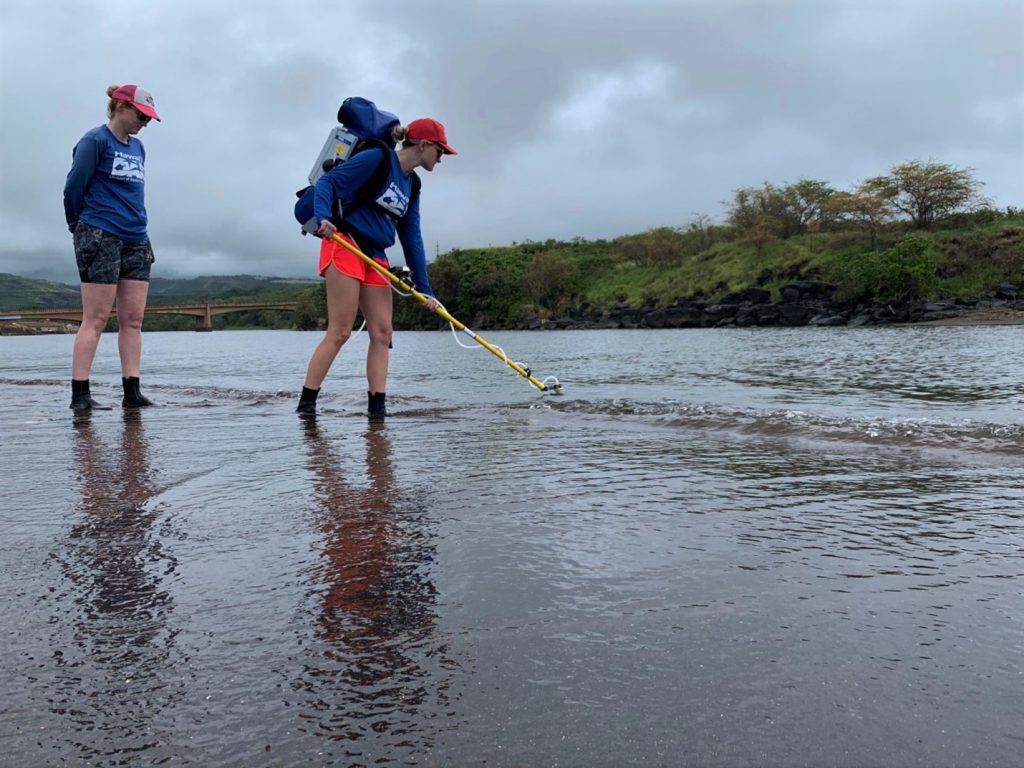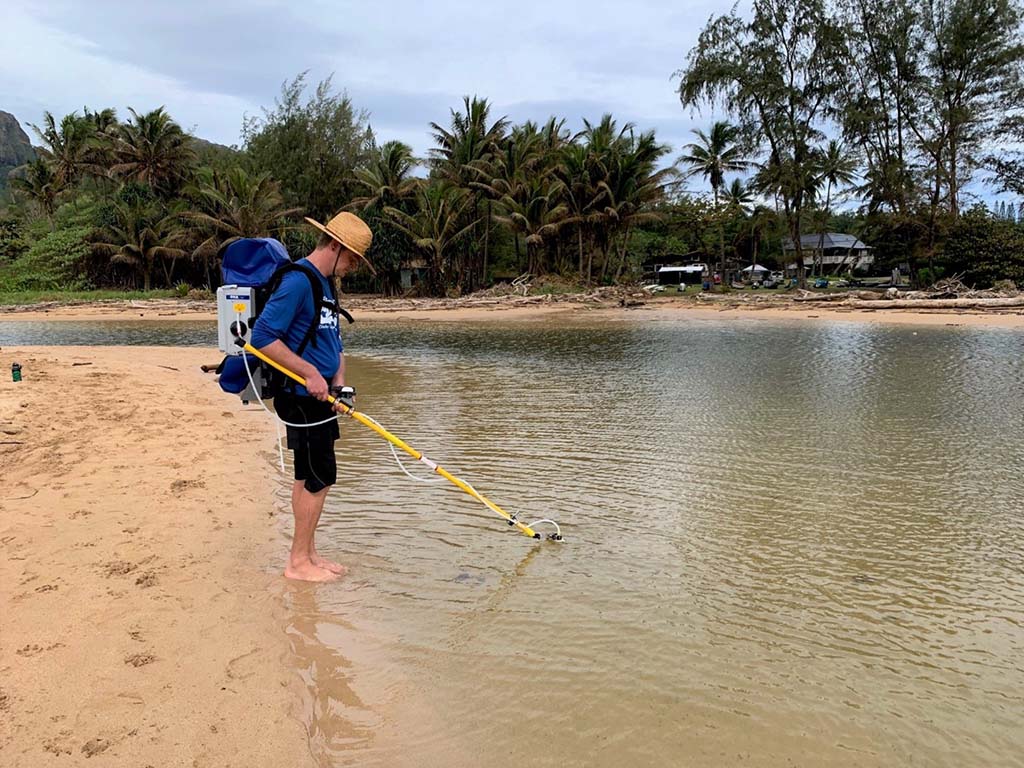3/30/23 – A New Tool to Measure Biodiversity in Estuaries
By Kimberly A. Peyton, Ph.D.
DAR Estuary Project lead biologist
The Hawaiian Islands are a globally important hotspot for biodiversity (varieties of life populating an area). Many species are found only in Hawai’i; others were introduced here from elsewhere because of human activities.
These species make their home in the many ecosystems found throughout the islands, including dry forests, rainforests, anchialine pools, mountain streams, estuaries, and coral reefs. However, one of these ecosystems is not like the others. This is because estuaries (muliwai) are a composite ecosystem, made up of ecosystems from marine, terrestrial, and freshwater zones. Being an ecosystem that is an intermix of other ecosystems presents unique challenges in answering key questions aimed at estuarine management, such as:
- What species are found in estuaries?
- What species may be affecting habitat quality in estuaries?
- How do management actions in urban or rural settings, forests, streams, groundwater sources, or coral reefs impact nearby estuaries?
Answering these questions is critical because young fish (pua) begin their coastal life in estuaries, sustained by an abundance of food that feeds their rapid growth.
A new, cost-effective tool for measuring biodiversity has emerged in recent years. Environmental DNA (eDNA) is being used by DAR to assess changes in biodiversity as an indicator of how well management actions are working in estuaries around the islands.
What is eDNA?
Organisms shed or release parts of themselves into their environment. Some examples are mucus, skin, or excrement. These cellular particles contain unique genetic codes of the organisms that shed them and are known as environmental DNA (eDNA). Water that fish and other aquatic organisms live in is the environment that contains their eDNA. By collecting water samples and filtering them eDNA can be collected onto filters. The DNA of organisms present on these filters can be identified using molecular biology techniques. eDNA gives us a list of species using an area, which elevates our understanding of species found in different ahupua’a.
This work is funded by US Fish and Wildlife Service Sportfish Restoration program, Commission on Water Resource Management, and the State of Hawai’i.

Using eDNA field sampler in Hilo Estuary to pump water through a filter and record data, including location and volume of water, to preserve high quality eDNA. Hilo Bay is a popular estuary for sport-fishing as well as other recreational activities, including boating, paddling, and surfing.

Filtering unit is fitted on to the end of a sampling pole so that water can be pumped through this unit trapping eDNA on the filter under sterile conditions. The pump is located in a backpack.

Waimea Estuary on Kauai recieves its freshwater from one of the largest rivers in the islands. By sampling with eDNA at the rivermouth we can record species in the area, including some in the upper watershed, that use this important river.

DAR is using eDNA in Maui streams and their estuaries to document how biodiversity changes in both of these ecosystems in response to diversion of streams as well as to restoration of freshwater flow. This work was funded by the State Legislature and the Commission on Water Resource Management (CWRM)

Anahola Estuary, on the eastern shoreline of Kauai, has a deep river with a shallow mouth that opens onto a white sand beach. Protection offered by Anahola attracts juveniles of many species to settle there when their time as plankton is finished.

Kīholo Estuary, located on the leeward side of Hawai’i Island, is one of many noteworthy estuaries receiving freshwater inflow from coastal groundwater only. A layer of cold, clear freshwater floats on top of saltwater in this productive bay.
